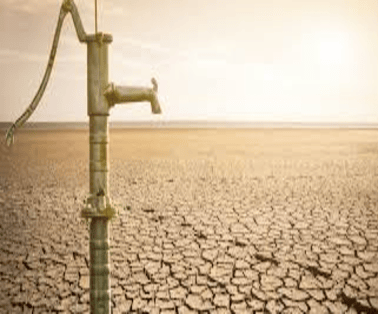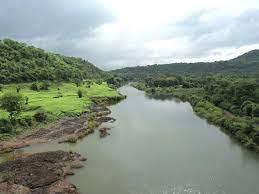Bengaluru, often called “India’s Silicon Valley,” is facing a severe water crisis in 2024. With a population of nearly 14 million and a booming IT industry, the city is struggling to meet its daily water needs. The ongoing Bengaluru water crisis highlights the urgent need for sustainable water management and conservation strategies.
Key Facts About Bengaluru Water Crisis
- According to the reports, 223 of the 236 talukas in Karnataka are affected by drought, including Mandya and Mysuru districts
- As summer intensifies, about 7,082 villages across Karnataka are at risk of witnessing a drinking water crisis in the coming months.
- According to a report, Bengaluru requires about 2,632 million litres per day (MLD), with residential use accounting for 72 per cent, industrial use 17 per cent, commercial/institutional use eight per cent, and construction two per cent.
- The city receives 1,460 MLD from the Cauvery River, covering nearly half of Bengaluru’s needs but costs Rs 3 crore daily for pumping.
- Of the other 52 per cent, groundwater is crucial but overused. The city draws an estimated 1,392 MLD but naturally replenishes only 148 MLD through green spaces and water bodies.
- The report shows that pumping groundwater costs nearly as much as pumping from Cauvery River reservoirs, about Rs 2.7 crore daily, excluding transportation costs.
Causes Of Bengaluru’s Water Crisis
- The Bengaluru water crisis is caused by a number of reasons including a lack of rainfall, depleting groundwater, inadequate infrastructural planning, and the influence of water tanker operations.
- The IT hub is particularly affected by a severe drought, with insufficient rainfall leading to a decline in the Cauvery River’s water levels. This shortage impacts not only drinking water but also irrigation.
- Furthermore, the lack of rain in recent months has contributed to the drying up of borewells in Bengaluru.
- The Bangalore Water Supply and Sewerage Board (BWSSB), responsible for the city’s water supply, primarily relies on the Cauvery River for water. Areas without access to Cauvery water connections depend on borewells or tanker water.
- However, with falling rain and excessive extraction, groundwater levels are rapidly declining, causing many borewells to dry up
- The city’s infrastructure has not kept pace with its rapid growth. Over the last four decades, the city has lost 79% of water bodies and 88% of green cover, while areas covered by concrete have increased 11-fold
- Changing weather patterns, including erratic rainfall and prolonged droughts, attributed to climate change, have reduced the availability of water in Bengaluru’s reservoirs and natural water bodies.
- A study conducted by the Environmental Management & Policy Research Institute (EMPRI) states that about 85% of Bengaluru’s water bodies are polluted by industrial effluents, sewage, and solid waste dumping.
- Inefficient water management practices, including wastage, leakage, and unequal distribution of water resources
- Disputes over water sharing between Karnataka and neighbouring states, particularly with regard to rivers like the Cauvery, further complicate efforts to manage and secure water resources for Bengaluru’s residents.
- There is an ongoing tussle between the central and state governments concerning the distribution and allocation of funds aimed at addressing the drought situation in Karnataka.
What Is Karnataka Govt Doing To Solve Bengaluru Water Crisis?
- Amidst Bengaluru’s severe water crisis, the Karnataka government has taken several measures to address the pressing issue.
- The Bruhat Bengaluru Mahanagara Palike (BBMP) has established a control room at itas head office to tackle water supply challenges in 110 villages across 35 wards.
- Additionally, the civic body has appointed nodal officers to manage drinking water issues in various parts of the city grappling with the water crisis.
- Officials have also been instructed to utilise unused milk tankers for water supply. The tankers owned by the Karnataka Milk Federation (KMF) will be cleaned before being used to provide water in Bengaluru. Until the shortage is fixed, water will be supplied by these tankers.
- Chief Minister Shivakumar also announced that a total of Rs 556 crore has been earmarked to address the water crisis in Bengaluru. Each MLA in Bengaluru city has been granted Rs 10 crore to address water scarcity in their respective constituencies.
- Additionally, the BBMP has earmarked Rs 148 crore, while the BWSSB has allocated Rs 128 crore to tackle the issue.
India’s Water Crisis
- India has 4% of the world’s water resources
- India has 1123 billion cubic metres of surface and groundwater resources.
- However, 163 Million Indians lack access to safe drinking water. 210 Million Indians lack access to improved sanitation. 21% of communicable diseases are linked to unsafe water.
- 500 children under the age of five die from diarrhoea each day in India.
Groundwater Crisis in India
- Despite supporting 17% of the world’s population, India possesses only 4% of the world’s freshwater resources, making it challenging to meet the water needs of its vast populace.
- India is the largest groundwater user in the world, with an estimated usage of around 251 bcm per year, more than a quarter of the global total.
- The NITI Aayog report mentioned that India was placed at the rank of 120 amongst 122 countries in the water quality index, with nearly 70% of water being contaminated.
- In parts of India, high levels of arsenic, fluoride, nitrate, and iron are also naturally occurring in groundwater, with concentrations likely to rise as water tables fall.
Government Schemes Addressing India’s Water Crisis
- MGNREGA: Supports water conservation through rural employment.
- Jal Kranti Abhiyan: Raises awareness on water conservation.
- National Water Mission: Promotes sustainable water management.
- Atal Bhujal Yojana (ABHY): Improves groundwater management.
- Jal Jeevan Mission (JJM): Aims to provide tap water to rural households.
- National Mission for Clean Ganga (NMCG): Addresses Ganga basin groundwater issues.
Conclusion
The Bengaluru water crisis is a wake-up call for urgent action on water conservation, sustainable urban planning, and efficient resource management. Without immediate measures, Bengaluru risks severe water shortages in the coming years.
By investing in rainwater harvesting, wastewater recycling, and improved groundwater management, the city can mitigate its growing water crisis and ensure a sustainable future for its residents.
To Download Monthly Current Affairs PDF Click here
Click here to get a free demo
Discover all about CLAT Exam



